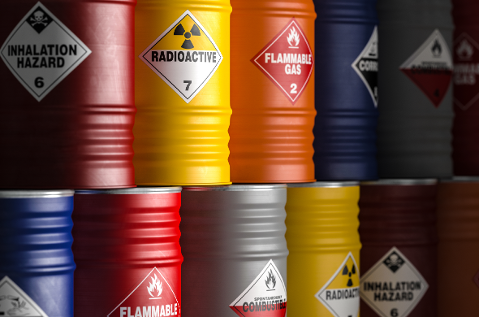Since the 1980s, the Occupational Safety and Health Administration (OSHA) has required most employers to protect their workers from workplace chemical hazards, and to train workers to protect themselves. Most employers are subject to OSHA’s Hazard Communication Standard (HCS; 29 CFR 1910.1200), or to variants imposed by states delegated OSHA’s authority. OSHA revises its HCS from time to time; by far the biggest revisions were adopted in March 2012, when OSHA recast HCS to align it with the United Nations-sponsored Globally Harmonized System of Classification and Labeling of Chemicals (GHS). OSHA’s 2012 revisions conformed the US to GHS Revision 3, which was issued internationally in 2002. The most obvious change was the adoption of Safety Data Sheets (SDSs) to replace longstanding Material Safety Data Sheets (MSDSs), but employers faced a series of deadlines during 2013-2016.
Read MoreAudit, Compliance and Risk Blog
OSHA proposes to update its Hazard Communication Standard
Posted by Jon Elliott on Tue, Mar 30, 2021
Tags: OSHA, MSDS, HCS, GHS, Hazard Communication
California is a persistent exception to states’ limited abilities to create long-lasting effects on national environmental health and safety (EH&S) programs. One example, well-known here in California but relatively invisible to EH&S professionals outside the state, is Proposition 65.
Tags: OSHA, California Legislation, EHS, Hazcom, MSDS
If government provided a unified approach to chemical regulation, then each chemical might be subject to a single set of requirements, which ideally would be tailored to reflect chemical-specific hazards throughout its life cycle. Instead, each chemical is subject to its own loosely connected (some would say haphazard) collection of environmental, health and safety (EH&S) requirements. Some are federal, some are state (or provincial if you’re in Canada), and others are regional and even local. You may need to refer to agencies at all three levels (federal, state and local) to identify your regulators and their requirements – although many organizations only deal with the agency responsible for permitting and inspecting day-to-day activities.
Tags: Audit Standards, Environmental risks, Environmental, EHS, EPA, Hazcom, MSDS, mact
On Monday, March 26, 2012, the Occupational Safety and Health Administration (OSHA) promulgated a final rule officially adopting the Globally Harmonized System of Classification and Labeling of Chemicals (GHS) as part of the Hazard Communication Standard [29 CFR 1910.1200]. Employers that make, transport, handle or otherwise use chemicals should start now to prepare for the transition to GHS.
Tags: SDS, Health & Safety, OSHA, MSDS, Webinar
OSHA’s New Hazcom Explained
Everything you think you know about
about hazardous chemicals is about to change
Since the 1980s, most employers throughout the U.S. and Canada have been required to protect workers from workplace chemical hazards, and to train workers to protect themselves. The cornerstones of these programs have been manufacturer-supplied summaries called Material Safety Data Sheets (MSDSs). Sad to say, but sometimes they’re wobbly cornerstones, because they start with hazard information developed by company scientists for agency scientists, and may or may not extend that information into practical hands-on guidance for employers and workers. They also vary in detail, because the Occupational Safety and Health Administration (OSHA) provides guidance for appropriate topics but no requirements that the content be practical. While some MSDSs are fine, we’ve all grumbled about others that report clinical results of the lethal dose of constituent chemicals to half the test population (LD50), but then recommend no more than "use appropriate personal protective equipment."
Tags: SDS, Health & Safety, OSHA, California Legislation, Training, Environmental, EHS, Hazcom, MSDS





